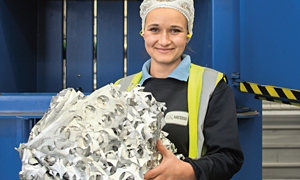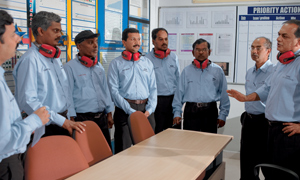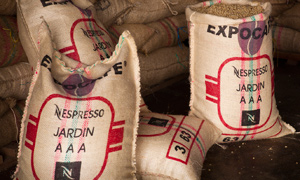Nestlé is the worlds largest food company with about 1.1 bilion dollars in sales per year. it was started in 1905 by Henri Nestlé and since then it has grown to have 447 factories and 333,000employees working in 194 countries. In this project i will discuss how this multinational company uses sustainability in its production .
The following data has been collected from Nestlé’s own website (www.nestlé.com). Nestlé aims to have no waste output in 10% of their factories in Europe by 2015, in addition to these aims they are hoping to achieve a 25% reduction in energy consumption per tonne of product since 2005. by 2013 Nestlé has managed to reach their objectives as 12% of their factories now run on zero waste. the company also managed to reduce energy consumption per tonne of product by 23% since 2005, achieving their aims 2years in advance. Nestlé aims to improve efficiency, productivity and quality which will result into producing more with less resources. Nestlé is also working to improve their packaging by using Ecodesign for Sustainable Product Development and Introduction to minimise waste from packaging. Results show that Nestlé saved 66 594 tonnes of package material in 2013. Nestlé also aims to improve performance and functionality of their packages while using renewable material in the process. Neslté aims to expand the use of natural gas in their refrigeration units and this they have achieved by fitting all their new ice cream chest freezers with natural refrigerants. By introducing these changes, Nestlé aims to reduce greenhouse gas emissions per tonne of product by 35% by 2015. In addition Nestlé claim that 17% of their key materials in production are responsibly bought using their Responsible Sourcing Guideline (RSG) guidlines. This company prefers to purchase their raw materials directly from farmers rather than a third party as this benfits the farmers and makes sure that their products are bought at a price that allows the farmer to lead a healthy and sustainable lifestyle. Nestlé works closely with the NGO The Rainforest Alliance and alongside the farmers they work to produce the highest quality coffee possible while securing the livelihood of the farmers. At the end of 2013 62000farmers were working with Nestlé and the Rainforest Allience providing 84% of Nestlé’s coffee. All of Nestlé’s suppliers are carefully chosen making sure that they have the same environmental values as themselves. Nestlé wants to protect all ecosystems and they are strongly against deforestification, therefore Nestlé’s aim is to make sure that their products are not associated with deforestification. Another point that Nestlé is addressing is information to customers. Nestlé aims to provide customers with information of environmental improvements and challenges. This food company is constantly working on improving their products environmental performance therefore they are giving their customers scientific data guiding them while choosing their products. Training is another aspect with Nestlé’s high attention. They aim to have environmental sustainability as a key part of every employees training therefore encouraging their employees to have this in mind in day-to-day activities in the workplace as well as home.
Nestlé being the worlds largest food and beverage company lead the way in using environmental sustainability as a key factor in their business operations. Its only a matter of time before this principle is addopted by other food companies following in nestles footsteps creating a better, more environmentaly sustainable world for future generations.




